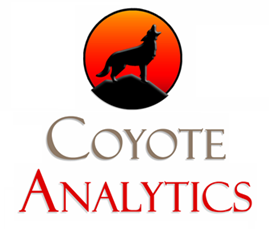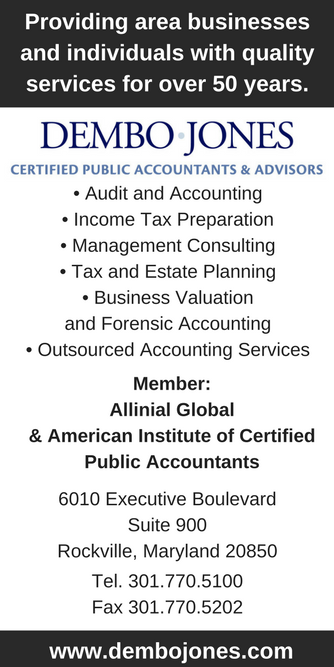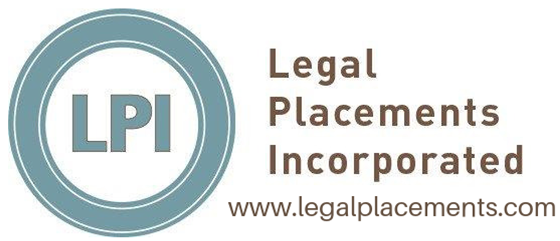| Capital Connection |
September 2019Capital Connection is published monthly for members of the Capital Chapter of the Association of Legal Administrators to provide information for the education and benefit of legal administrators, law office managers, managing partners of law firms, and other law related associations. Capital Connection is not engaged in rendering legal, financial, or tax counseling or advice through this publication. The contents of all articles, letters, and advertisements published in Capital Connection should not be considered endorsements by the Capital Chapter of ALA nor the opinion expressed therein of any products advertised. Contributing authors are requested and expected to disclose financial and/or professional interests and affiliations that may influence their writing position. Articles and materials accepted for publication are subject to editing by the editorial team and become property of the Capital Chapter of the Association of Legal Administrators. Links to Capital Connection may not be shared without permission from the Chapter.
Editors: Cindy Conover; Valerie Williamson; Beth Fowler Associate Editor: Paula Serratore Contributing Editors: Denise J. Abston; Spencer X Smith; Adams & Martin Group; Barbara Kernus; JK Moving Services; Philip O'Sullivan; Heinan Landa; Amy Walkowiak Newsletter Designed By: Jessica Davis |
In this issue: |
Members on the MoveIt is with mixed emotions that the Capital Chapter says farewell to Jessie Davis. Jessie has served as the Chapter's Membership Coordinator and Event Planner for the past four years, during which time she brought a sense of energy and enthusiasm to projects both large and small. Her creativity, positive attitude, and willingness to help have been appreciated, and she will be missed. We wish her nothing but the best as she moves into the next phase of her career.
A Message From Jessie: Dear Capital Chapter Members and Business Partners, The past four years have been such a blessing - I am abundantly grateful for all of the opportunities that I've had to learn and grow throughout my time in this position, and it's been a pleasure getting to know all of you along the way. Thank you all so much for everything, it's been a phenomenal four years. I hope our paths cross again in the future. Sincerely, Jessie Davis In MemoriamThe Capital Chapter is sad to announce the passing of longtime member Ettastine Williams on Thursday, September 5, 2019. Ettastine was a member of the Capital Chapter for 14 years, and was the Human Resources Manager at Baker Hostetler.
She is survived by her husband Roger Williams, Jr.; three daughters Kimberly, Monica and Adrienne Williams; her father George Chatmon; brother George E. Chatmon; and a host of family and friends. Maximize the Impact of Your Firm Sponsorships with Social MediaSpencer X Smith
Law firms are some of the most generous entities in existence. I’m not aware of any other industry where the professionals are expected to do work for free as part of their duty. Pro bono work on an individual level is often not publicized, but the work you do in the community as a firm should be. Here’s how to ensure both you and the charities, nonprofits, etc. you’re supporting gain the maximum amount of exposure and awareness for their causes. As a law firm marketing leader and strategist, this process will involve you and your team, and also require a nominal amount of effort for those doing the charitable work. Before we all had social media available at our fingertips, the good work you do would be relegated to those present at an event, or to those who happen to read a specific publication. Now, with very deliberate activities, we can magnify the effects of your efforts through the social media channels you control and maintain as a firm. Utilizing social media before, during, and after firm sponsorships events will help to gain the attention of the audiences both you and the organizations themselves would like to reach. You can easily highlight your involvement by showcasing the work you and the nonprofit organization are doing through the systematic process detailed below. The organization itself will benefit from the added awareness that you are doing on their behalf, while you demonstrate your generosity and engagement. Amplify your efforts by following these tips for before the event, during, and after. Before In advance of the event, compile a list of the following social media account handles:
These social media account handles will be used during the event to engage with audiences who both are attending the event and those who can’t (but are passionate about the cause). Additionally, they will be used to showcase highlights from the speakers as well as the event organizers. Both groups will feel appreciated and will most likely share your posts with their networks as well. Following the event, the social media account handles can be used to provide key takeaways from the speakers and thank everyone involved for attending and/or speaking. Create or utilize the event hashtag This hashtag should be utilized during and after the event. The creation of a hashtag can create great public awareness of the event and the people involved. The hashtag also has the ability to connect yourself as an individual to the event for future inquires. Hashtags that are created should be creative and positively represent the event and utilizing hashtags can increase engagements with the social media posts. Often, event organizers will create an event hashtag for the attendees to use. If this is the case, ensure you both utilize the hashtag in your posts, and also engage with others using the hashtag as well. If you show others you’re listening to them, they’ll love you for it. Post on social media using this template Sample: Were thrilled to join @sponsor and @sponsorB in supporting @event with @guestspeaker. Look forward to seeing you there! #eventhashtag <and include a link to the URL of the event itself> Promote Instead of simply hoping people will see your sponsorship, let’s make sure they do. Using social media ad platforms, advertise your posts to audiences interested in the organization, cause, team etc. Platforms for posting can include Twitter, Instagram, Facebook, LinkedIn, etc. When posting, ensure you include the date of the event and scheduled time frame. Also, before posting, consider creating an advertising budget and analyzing your audience. By gaining a deeper understanding of who should see your post, you can set an audience in the social media ad manager programs. Example for a promotional strategy – you and your firm sponsor a walk to raise money for cancer research. After posting your support and involvement on social media, use the platforms’ respective advertising functions to target those whom have shown an interest in cancer support groups or cancer-related research. Further narrow that audience to comprise a geographic radius near your firm’s office(s). For a very nominal amount of money, both current and prospective clients will be made aware of your involvement. In this example, the organization conducting the walk will also benefit from the awareness you’re bringing to their cause. During the Event Take photos and videos of your attorneys, staff, clients, and business partners attending the event. While the event is happening, post the content on social media and tag the handles from the sample above. Tagging those who are at the event increases the probability of your social media posts to be viewed by others because they likely will share your posts with their audiences. Post-Event Using the script from the sample above, post facts about the event (attendance, money raised, significant news, etc.) Consider adding an advertising component to promote this post to the target audience as well. Share ‘thank you’ posts on social media to help ensure those individuals responsible for organizing and running the event feel appreciated. Engaging with those who were also at the event is a good way to reach new audiences, while liking, retweeting, and other engagements with posts (utilizing the hashtags) associates yourself with the event. Both you and your firm spend significant time & money to participate in and promote your involvement in sponsorship events. Social media is a fantastic means to amplify that message with a small investment of time, and if you choose to advertise, a nominal promotion budget. Start taking advantage of the power of social media to promote worthwhile causes today. Spencer X Smith is the Founder of AmpliPhi Social Media Strategies in Madison, Wisconsin, and his company services law firms around the country. Spencer can be reached via his website at spencerXsmith.com. September 2019 Diversity ObservancesHispanic Heritage Month is observed from September 15 to October 15. This month corresponds with Mexican Independence Day, which is celebrated on September 16, and recognizes the revolution in 1810 that ended Spanish dictatorship.
Click here to view the full list of September 2019 observances Employment Law Updates You Need to Know

The legal landscape for employers is constantly changing, directly affecting the way you hire and manage employees. As experts in recruiting and hiring, Adams & Martin Group has put together this brief overview of recent legislation that you should be aware of. Please note that as with all legal matters, consult your in-house counsel regarding how these laws affect your organization.
Salary History Inquiry & Equal Pay Continuing the trend seen in 2018, several cities and states are enacting laws this year that protect equal pay and prohibit employers from asking applicants about their prior pay, in an effort to discourage discriminatory pay practices. In addition, California, Massachusetts, Delaware, Vermont, New York City, and Philadelphia have similar laws. Even if your organization does not operate in one of the areas affected by these laws, you should be aware of this legislative trend and consider what changes to enact at your organization. “Ban-the-Box” Many states are prohibiting employers from asking: “Have you been convicted of a crime?” In areas where this has been enacted into law, the question can be asked only after a conditional offer of employment has been made. For example, in California, employers cannot ask this question or run a background check on the applicant until after a conditional offer of employment has been made. The law provides additional rules concerning how employers can use background check records in making employment decisions. In an effort to avoid employment discrimination under Title VII of The Civil Rights Act, the EEOC offers guidelines to consult when making employment decisions surrounding an applicant’s arrest and conviction records. Minimum Wage Increases Nineteen states plus several cities and counties have passed increases to the minimum wage in 2019. Be sure you are up-to-date on all new or changing laws regarding the minimum wage in your area. Sick Pay Cities and states are continuing to pass laws that require employers to provide paid sick time for their employees. Be aware of laws that impact your organization – especially if you have locations in different cities – and develop a plan. Marijuana Laws More states have legalized marijuana for recreational purposes in recent years. Most states allow employers to enforce zero-tolerance drug policies and fire employees for off-duty use. Only one state so far – Maine – protects “off-duty recreational marijuana use.” Your organization also needs to be aware of the rights of medical marijuana users and if your company needs to accommodate medical marijuana use. The legal landscape on this issue is complex and changing rapidly. Some accommodation requirements are based on previous case law — not statutes. Be aware of rulings as they relate to employers. Sexual Harassment Laws The topic of sexual harassment continues to be at the forefront of media coverage. Take the time to ensure your organization’s policy is well-defined, updated and communicated to all your employees. Some states require sexual harassment training for supervisors and the state of California recently passed legislation requiring it for all employees effective in 2020. About Adams & Martin Group Adams & Martin Group is a values-driven, full-service legal staffing firm. Their team of experienced legal recruiters provides expertise in legal hiring needs for firms and legal departments throughout the region, creating customized solutions for each client. They offer temporary and temporary-to-hire staffing services, direct hire recruitment, attorney search services, legal project team staffing, as well as specialized services through their Litigation Solutions team. www.adamsmartingroup.com [email protected] (202) 350-3976 4th Annual Catering ExtravaganzaBarbara Kernus
Office Administrator, DC & New York, Garvey Schubert Barer Chair, Branch Office Administrators Community If you weren’t one of the 75 people who attended the Capital Chapter’s fourth annual catering expo on August 15, this is what you missed: There were eighteen vendors displaying a wide array of food—from sophisticated hors d’oeuvres to gourmet ice cream. For the adventurous, there was a chocolate nut protein bar that contained cricket powder. Upon arrival attendees were given a gift box of four mini bundt cakes, and as they were leaving, participants could take a to-go box very neatly packaged by an exhibitor. The expo could not have been a success without the outstanding assistance of Kenia Garner and her wonderful team at Pillsbury. They made everything seamless. This year's vendors included: 8 Essential Steps to Planning Your Office Move

Planning an office move is a multi-step process that requires careful planning and several preparation steps. It’s best to divide the workload and assign specific tasks to different employees. Starting the process early and maintaining frequent open communication are key. Here are 8 essential steps to a successful, stress free move.

1. Create a Timeline
Create a timeline that includes all the required stages of your move. Discuss the plan with all team members involved with the move as early as possible. Be realistic about how much time you will need. A small office may need at least three months to prepare, while a medium to large office may need six to eight months. 2. Design the New Space Next, collect all available information on the new space. Obtain blueprints or a floor layout to identify key components (electrical outlets and storage space) and begin designing the new office layout. Have a general layout plan for your current space so you can compare the two. If there are areas in the current office that are not working, identify them now so you can avoid them in your new space. In addition, make a list of potential problems with the new space, such as a smaller reception area, less storage capacity, or perhaps a larger open space that requires more cubicles or temporary walls. It may be necessary to hire carpenters, painters, electricians, systems installers, or other professionals to build walls, add wiring, or make cosmetic changes before you move in. 3. Build Your Moving Team For medium to large offices, appoint someone (or ask for volunteers) from each department or division to coordinate their area. This person can ensure that each employee takes responsibility for packing their desk, files, and personal items. For smaller offices, you may be on your own. If so, identify a few key people who will be able to help you coordinate the move. Your team can assist in identifying current issues with the old space and find possible solutions for the new office. This is a great way to incorporate their viewpoints and achieve buy-in on the move, especially if some employees are adverse to the move. 4. Conduct Regular Meetings Set regular meetings to discuss the move and its progress with all employees. Keep everyone informed and address employee concerns and comments. Moving is stressful for everyone involved and can be more stressful if decisions are not adequately communicated. 5. Determine Your Budget If you have a specific budget amount assigned for your move, it is important to identify costs before you hire movers, or even before you pack the first box. 
6. Assign Tasks
Have your moving team create a task list that needs to be completed – ensure critical tasks are added to the schedule. Ask each department manager what is required from their area, which may include specialty service providers. This could be vendors such as telephone line installers or computer network specialists. Also make sure that common areas are covered, such as the reception area, lobby, and storage spaces. 7. Hire the Movers Hiring movers is one of the most critical tasks of moving a business, with moving companies that specialize in office moves. It’s important to make sure the company is reliable and that you are receiving the best service for the cost. Do your research, ask the right questions, and have the company come to your office to assess your move. This task can be assigned to one person or group, with each calling specific companies and then comparing notes. Start early to make sure you get the best value that fits for your needs. 8. Make a Contact List Finally, create a contact list of everyone doing business with you know and let them know that you’re moving. It’s a good idea to assign this task to one person to oversee and prevent contacts from falling through the cracks. Notify customers and clients about your new location and how the business will operate during the move. Such information is essential to ensure your customers don’t go elsewhere for your services. Need more help? Schedule a free consultation to get you started planning your office move. 703.260.3076 | [email protected] A Letter from 2016 Toni K. Allen Scholarship Recipient Philip O'SullivanDear Capital Chapter,
I hope this letter finds you all well. I know this letter is a little later than usual, however, I have some exciting news which I hope will be well worth the wait. I am proud to announce that I have been accepted into Harvard Law School's Junior Deferral Program, a special program which allows juniors to apply on the condition that they wait two years before matriculating. As such, I am happy to say that I will be going to Harvard Law School in 2022 as a member of Harvard Law School's class of 2025! I would like to thank you all for supporting me on this journey! I have not decided yet what I will be doing during my two years before law school, but I will be sure to keep you all in the loop going forward. At school I finished another excellent year and I am feeling bittersweet excitement about beginning my final year this fall. I am once again happy to report that I have kept up the good work in my classes; I finished the year with a cumulative GPA of 3.97 and I was selected for several prestigious awards for my academic performance and contributions to the wider campus community. Among them, I was inducted into my school's chapter of Phi Beta Kappa, the country's oldest college honor society, as a junior, an honor bestowed to only the very highest performing students. I was also selected as a student marshal, one of the highest honors the college gives to juniors based on their academic achievement and contributions to the campus community. Finally, I was inducted as a member of the Maroon Key Society, the college's honorary society which advises the Dean of the College on aspects of student life. I also had the chance to take more interesting history classes this year, including classes on the 19th century U.S. historiography and on the intellectual history of Europe from the Renaissance to the Enlightenment. In the class on European intellectual history I had the chance to read major Enlightenment thinkers like Descartes, Rousseau, Hobbes, and Voltaire in the proper historical context of their time. I also particularly enjoyed the U.S. history class, as I had the chance to learn more about the history of Chicago and its image in historians' minds throughout the nineteenth century. I also started working on my senior thesis, which is on a history of police misconduct lawsuits in Chicago. Specifically, I plan on looking at the historical development of Section 1983 federal civil rights lawsuits filed against the Chicago Police Department in the twentieth century. I also continued to take more interesting classes outside my major. I continued taking an introductory sequence in data science and an honors, proof-based sequence in calculus. I found the calculus sequence so interesting and engaging that in the spring I decided to also take proof-based abstract linear algebra as well. Since that also failed to satiate my interest, I have decided to also declare a minor in mathematics, which will entail taking courses in real analysis and abstract algebra this upcoming year. Outside of class I continued my job as a research assistant working for sociology professor Robert Vargas. I am currently using some of the skills I learned in my classes this year to work on writing a program in the computer programming language Python which will save our group a lot of time by automating crucial but mind-numbing data entry work. Professor Vargas has also invited me to co-author a law review article with him for an upcoming symposium at the University of Chicago Law School on violence in Chicago. Our article will focus on the relationship between crime waves and policing and will be published in May 2020 in the University of Chicago Law Review, a major legal publication. In addition to my job, I have continued participating in a leadership role in the undergraduate Moot Court team at my school, this time as President of the club. As President, I helped spearhead a successful effort to increase our funding from the school by over 20%, allowing us to let more people compete this upcoming year than ever before. I hope to continue to build on the great success our team has had in the past and continue to expand the opportunity for new members to join and thrive going forward. I also continued my leadership roles in college housing, helping with putting on events and programming like dinners and study breaks for over 400 students living in college housing. Outside of school I also had fun with my friends enjoying Chicago. The highlight was definitely getting the chance to see Hamilton the musical live at the theater. So far, I have spent most of my summer interning in New York City, working at an investment firm on Wall Street, in addition to continuing research on my senior thesis topic. I will be in New York until September 14th. I will then briefly return home to D.C. before heading off to Chicago on the 18th to participate in the orientation program for incoming freshmen. I hope to continue my good work in the future. If there is anything I can do to give back, please let me know! Have a Happy Fall! Philip O'Sullivan The Anatomy of Comprehensive Cyber Threat Protection for Law Firms
Heinan Landa
Founder & CEO, Optimal Networks, Inc. You deposited the cashier’s check and released the funds from your client trust account immediately. According to their emails, your client was in quite a hurry, and was depending on you to move as quickly as possible.
A few days later, you receive notice from the bank: the cashier’s check was fraudulent, and the bank transfer would not go through. Both your “client”—and all that money you wired to them—were long gone. The bank representative apologizes, but unfortunately there’s nothing they can do… -- The email alert said that your account had been compromised. You needed to change your password immediately to prevent any further damage. Not wasting a moment, you clicked the link in the email body. Once the web browser launched, you knew something was wrong. Windows were popping up left and right. The web page definitely wasn’t your usual login screen. Something started downloading onto your machine. Looking back at the email, you now notice the subtle typo in the sender’s email address… -- Comprehensive Security Strategy: Moving Beyond Prevention
When it comes to cybersecurity, your attorneys and staff are your weakest link. According to a recent report by Ironscales, 95% of all successful cyberattacks are the result of phishing scams like those above, which exploit human trust and error to gain access to valuable information, your systems, or your money. For years there has been an acute focus on preventing cyberattacks via technical controls and policy. This is a critical facet of your overall security strategy, and many firms have made excellent forward progress in this arena. But as you likely noticed, the most gaping vulnerability for your firm doesn’t have anything to do with exploiting your technology—these cybercriminals are exploiting your people, and with alarmingly high rates of success. This demands a more comprehensive approach to security that builds on prevention and also pays close mind to detection, remediation, and recovery. Let’s explore each of these further. Prevention: Security Awareness Training If human error remains the primary root of a successful cyberattack, it follows that educating your attorneys and staff on how to identify, avoid, and respond to security threats is your best bet when it comes to prevention. We’ve found that the most effective security awareness training programs have three prongs:
LogicForce reports that only 54% of law firms have a formal education program in place, despite the fact that they can reduce your risk of a breach by up to 70%. (And proper training is your only defense against fraudulent money transfers.) If your firm doesn’t have a training program in place yet, work with your IT team to see how you can make it happen. Detection: Advanced Endpoint Protection Endpoint Protection detects malware by way of recognizing known “definitions,” or strings of code that have been identified as malicious. This is your standard Norton or Webroot antivirus software. Advanced Endpoint protection detects a security incident by way of flagging behavior that it has learned—by way of Artificial Intelligence—to be “unusual” for a particular machine. Beyond just detecting threats, many of these solutions will cross into the realm of remediation as well. Our solution, for example, will try to resolve security alerts on its own, and will escalate more severe alerts to actual humans at a 24/7 Security Operations Center (something a mere 24% of firms have implemented). It also packages in SentinelOne’s Ransomware Rollback feature that can stop a successful attack in its tracks, and roll your files and Operating System back to a safe state free of the malware. These packages are stunning in their ability to pick up on even the most subtle signs of budding malicious activity, and contain the threat before damage can be done to your data (or your reputation). If you haven’t considered adding Advanced Endpoint Protection to your arsenal, we strongly recommend it. Remediation: Backup and Disaster Recovery If you don’t have an Advanced Endpoint Protection solution that can fully wipe your systems clean of and infection (and even if you do), backup is your best, well, backup! If your systems are taken down by a cyberattack, a solid backup and disaster recovery solution will let you get back up and running in short order. Even if all your files become encrypted by ransomware, a tried-and-true method of side-stepping the ransom payment and quickly resuming your operations is to recover those files from your last successful backup. Make sure you have a robust solution in place, and that your IT team regularly verifies that it’s working properly. As an important note: If you give malware enough time to spread, it’s possible for them to compromise your backups as well. This is why it is critically important to disconnect any potentially infected devices from your firm network immediately. Recovery: Cyber Liability Insurance According to the Ponemon Institute, the average total cost of a breach is $3,860,000. The main cost centers are:
Cyber liability insurance helps to cover these costs so they aren’t all coming out-of-pocket. While your IT team can help you determine your level of risk, we recommend starting the selection process with your firm’s insurance agent instead. We say this for two main reasons:
Also know that approval for coverage is often contingent on your firm having the above security measures already in place. Final Thought We’ve said it before: It’s not a matter of if your firm will suffer a breach, but when. While we never intend to fear-monger, we’ve seen first-hand the toll that a successful attack can take on an otherwise thriving business. It’s devastating. And besides avoiding these damaging consequences, most firms stand to benefit from comprehensive approach to security in another way. Consider this: Have any of your clients asked to perform an audit of your firm’s security posture? Would they be more or less likely to do business with you based on the results? Could this be an opportunity to gain another meaningful advantage over your competitors? Next Generation Leaders Community Recap: The New Neurology of Leadership Presented by Dr. James BaileyAmy Walkowiak
Office Manager, Wu/Grohovsky PLLC Co-Chair, Next Generation Leaders Community On August 21, members of the Capital Chapter’s Next Generation Leaders Community came together at Robbins Russell for our August monthly meeting, which was a special presentation given by guest speaker Dr. James Bailey, Professor of Leadership Development at the George Washington University School of Business. The topic was “The New Neurology of Leadership,” which taught us about the psychology of leadership and the emotional connection involved with leading other people. Dr. Bailey made the point that leaders are chosen by their followers not only because of their job title or a firm’s organizational structure, but also because of how they make us feel. Leadership is the ability to excite others to higher levels of performance. The core idea was that leadership is an emotional relationship, and positive emotions lead to higher quality decision-making and increased productivity. A special thanks to Dr. Bailey for presenting to the Next Generation Leaders Community, and also to Robbins Russell for hosting this event! Dr. Bailey is also available to speak to our Chapter on other related leadership topics such as Conflict Management, Negotiation, and Team Leadership.
| |
Administrative Committees
|
Communications and Media Relations
As members of the Newsletter and Media Relations Committee, Chapter members participate in producing the award-winning Capital Connection. Members gather to brainstorm new ideas for editorial themes for upcoming editions. The newsletter reports Chapter business activities such as Section and Committee news and provides information about upcoming educational and other events. It also includes articles of interest to members and other legal management personnel, collected, authored and/or edited by members of the committee. This committee also works with other legal associations and the media to ensure that ALA and the Capital Chapter are represented in the legal industry. The Newsletter Committee welcomes new members. Contact: Cindy Conover, [email protected]; Valerie Williamson, [email protected]; Paula Serratore, [email protected] Diversity & Inclusion
The Capital Chapter of the Association of Legal Administrators is a professional organization comprised of administrative managers from private, corporate and government legal organizations in the Washington DC, Northern Virginia and suburban Maryland areas. ALACC embraces and encourages diversity within the legal profession. We value diversity and those initiatives that promote it and look to partner with affiliated professional legal organizations to advance diversity. We not only strive to raise awareness, but to increase our sensitivity in the area of diversity and more closely reflect the diversity of our community at large. Having a more inclusive and diverse legal community will improve the quality of our organizations workforce and respond to our client’s requirements for diversity. As a committee we are very interested in your thoughts, comments, and suggestions about achieving greater diversity in our Chapter, our profession, and in our firms. Contact: Cheryl Flynn (Chair), [email protected]; Beth Fowler (Co-Chair), [email protected] |
Salary Survey
The Salary Survey Committee is responsible for maintaining, updating and running the local survey each year. They review the positions listed, the job descriptions, and the benefits questions to ensure that the survey remains relevant to the end users. The members of the committee also promote the survey within the Chapter to stimulate participation. Contact: Sheri Shifflett (Chair), [email protected]; Valerie Williamson, [email protected]; Member Experience
The Member Experience Committee will establish a welcoming environment for new members to be integrated into the Chapter through a formal Ambassador Program. Ambassadors will provide support and guidance to new members through their first 12 months of membership, ensuring new members realize benefits of membership and become ambassadors of the Chapter. Contact: Dot Mooney (Co-Chair), [email protected]; LaVerne Anenia (Co-Chair), [email protected] |
Educational Communities
|
Branch Office Administrators
The Branch Office Adminsitrators Community focuses on a broad range of topics of interest to local adminisraotrs who must coordinate with other officees of their firms. The Community's monthly luncheon meetings, held on the second Tuesday of the month, provide a venue for members to discuss issues of common interest, share ideas, and network. Members are encouraged to raise topics and to recommend speakers. Contact: Barbara Kernus (Chair), [email protected]; Joanna Hurt (Co-Chair), [email protected] Listserv: [email protected] Office Operations Management The members of the Office Operations Management Community represent a cross section of legal expertise from functional administrators to branch office managers. The Office Operations Management Section (OOMS) meets on the fourth Wednesday of every month to discuss operations related hot topics. We welcome all members to join the section, especially if you are an administrator in a small law office and you have to wear multiple hats. We can provide you with many best practices to run your operation smoothly. Contact: Kenia Garner (Chair), [email protected]; Jacqueline Keener (Co-Chair), [email protected] Listserv: [email protected] |
Intellectual Property (IP)
The Intellectual Property (IP) Community focuses on all aspects of legal management as it pertains to the IP Administrator. The group discusses the complexity of the ever-changing IP environment and how to effectively create and apply IP specific, non-legal procedures in both boutique and general practice firms. Contact: Matthew Cichocki (Chair), [email protected]; Judi Heston (Co-Chair), [email protected] Listserv: [email protected] Small Firm Administrators The purpose of the Small Firm Administrators Community is to provide Administrators of law firms with 35 or fewer attorneys educational opportunities through vendor presentations, idea sharing and open forums specifically designed for those who work in smaller firms. The Small Firm Management Community meets the fourth Tuesday of the month at host law firms. Contact: Valerie Williamson (Chair), [email protected]; Tabatha Harris (Co-Chair), [email protected] Listserv: [email protected] |
Human Resources
The Human Resources Community operates as a venue for educational information on global human resources issues. While the Community is mostly comprised of HR professionals, any member is invited to participate in the meetings which typically take place on the second or third Wednesday of each month. The meetings feature industry speakers or roundtable discussions on topics such as recruiting, benefits, strategic planning, performance management, career pathing, retention and other matters of interest. Contact: Tiffany Montgomery (Chair), [email protected]; Cindy Schuler (Co-Chair), [email protected] Listserv: [email protected] Next Generation Leaders The mission of the Next Generation Leaders Community is to support our next generation of leaders and close the gap faced by our association and the legal industry as a whole by providing a community for Millennial legal managers and new managers in the legal field with a focus on mentoring, education, and networking. To accomplish this goal, the section hosts monthly meetings, pop-up events, and educational sessions, and provides 2-way mentoring opportunities. Contact: Kate Fettrow (Chair), [email protected]; Amy Walkowiak (Co-Chair), [email protected] Listserv: [email protected] |
|
ALA Capital Chapter Headquarters
2800 Eisenhower Avenue Suite 210 Alexandria, VA 22314 Phone: (703) 683-6101 www.alacapchap.org |
ALACC Capital Connection Questions?
[email protected] Copyright © 2014-2024 by the ALA Capital Chapter All Rights Reserved |




















































